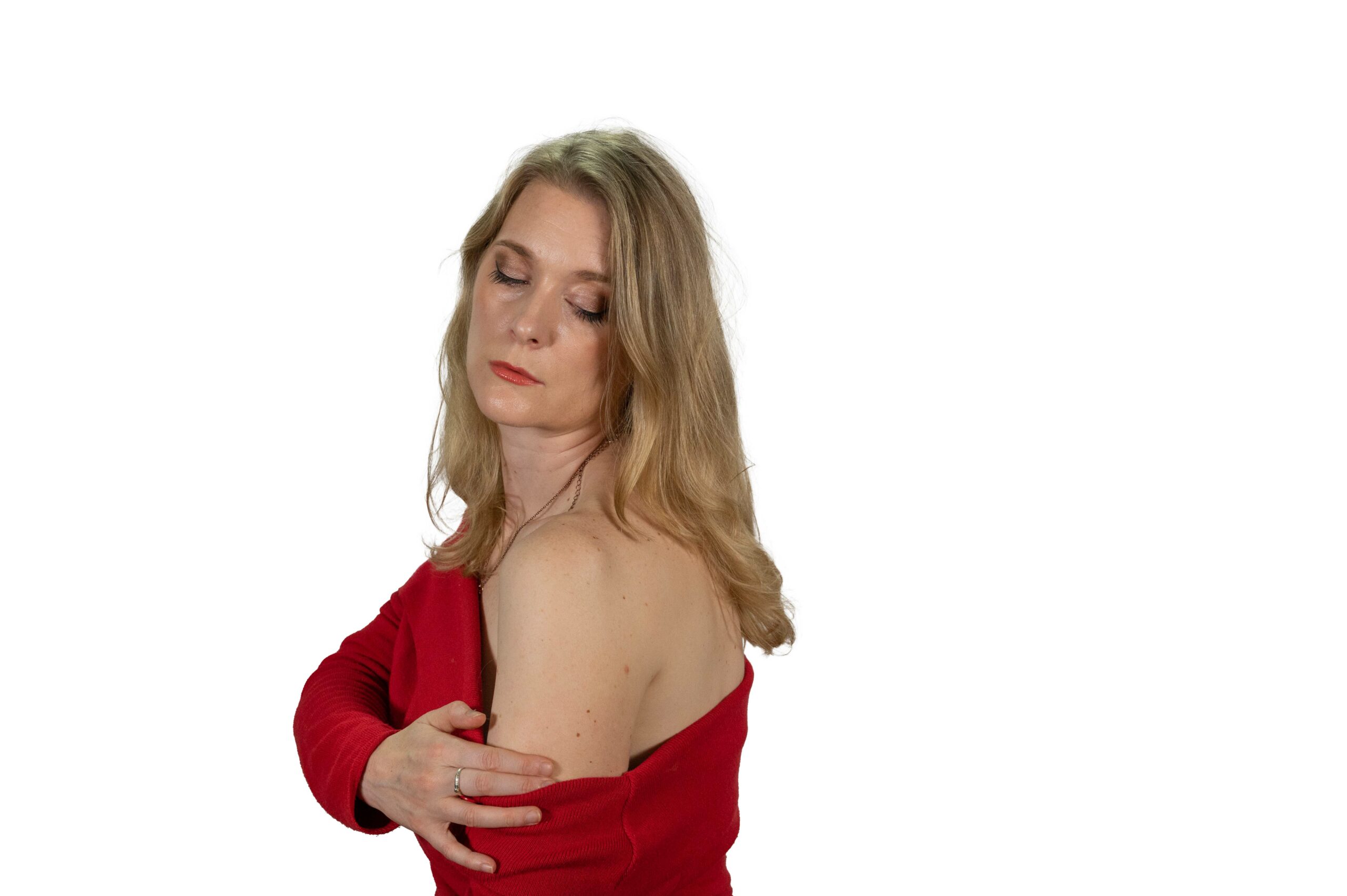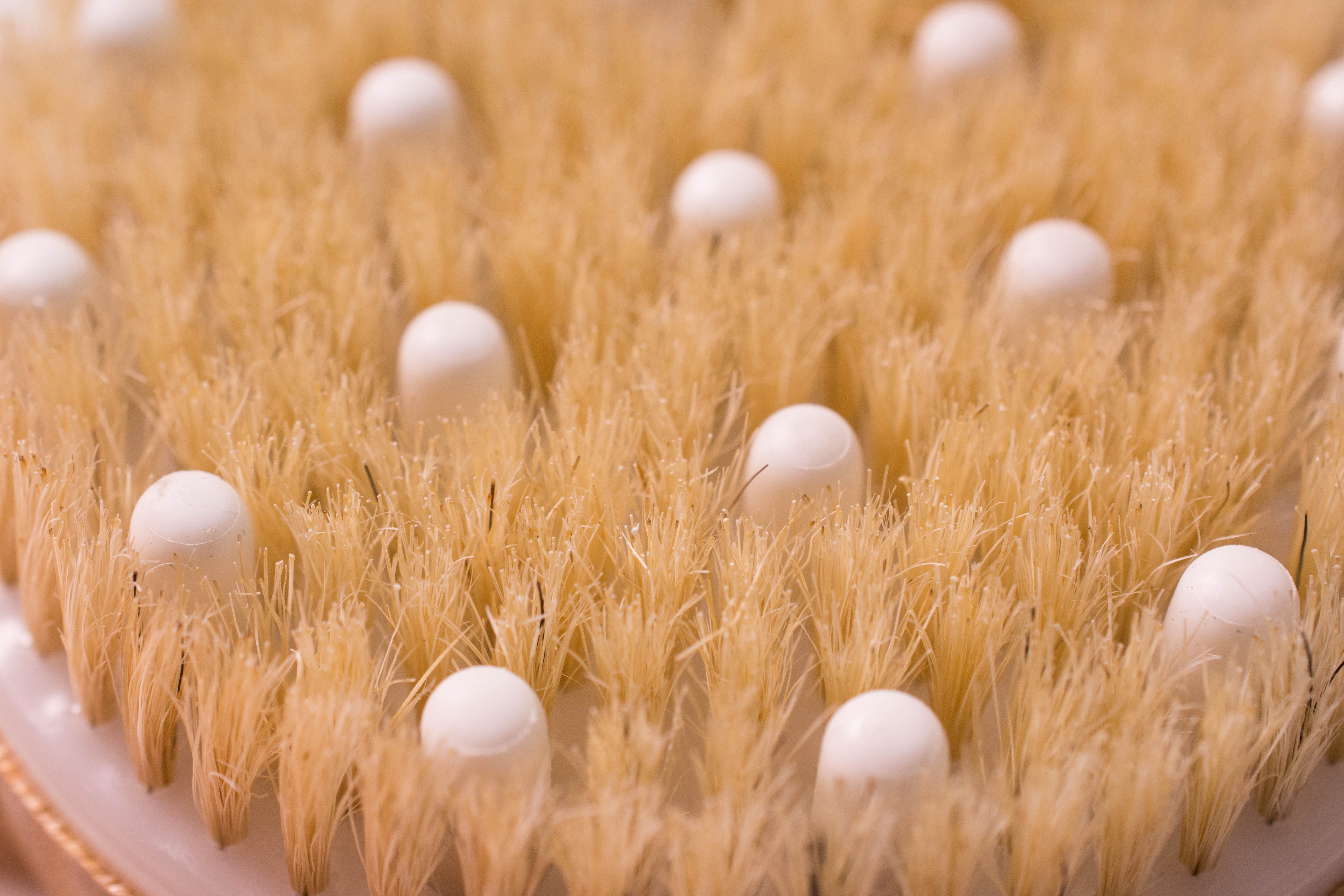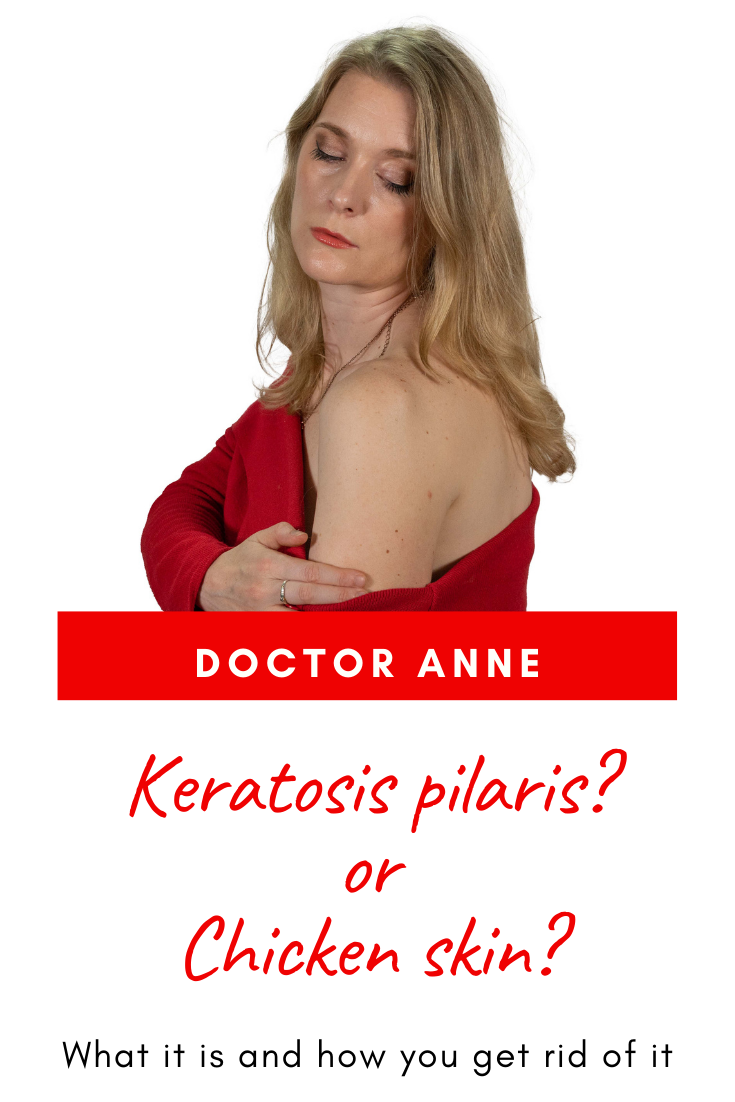ADVERTISEMENT INFO: THIS BLOG POST USES AFFILIATE LINKS. I RECEIVED NO MONEY TO WRITE IT. PLEASE READ DISCLAIMER.
Chicken skin, strawberry legs – strange names for the rough and bumpy skin you get at the back of your arms, your legs and sometimes even on your butt. The medical term is Keratosis pilaris – this doesn’t sound any less strange, but exactly describes what it actually is.

So, what does the term Keratosis pilaris actually mean?
Who can be affected?
How can you get rid of it and, maybe even more important, what makes it worse?
This is what we are going to talk about today!
What is Keratosis pilaris
Keratosis Pilaris translated means “too much Keratin” (Keratosis) “at the hair follicle” (pilaris), so it belongs to the group of keratinization disorders. Keratin is the protein your hair is made of, so it is found in the hair follicle, out of which the hair with its keratin alpha-helix grows.
Usually the extra keratinocytes shed when they reach the skin surface, but just like it is with other keratinization disorders that does not happen in Keratosis pilaris. Instead the keratinocytes plug up the hair follicle in the form of a small, but noticeable bump.
That can happen anywhere you have hair, but is most common on the back of the upper arms, the thighs and the butt.
These bumps are rough, sometimes skin colored, but quite often red in light skin and hyperpigmented in melanated skin. (More info: Different kinds of hyperpigmentation)
It is important to note that Keratosis Pilaris is NOT a skin disease, it is a skin disorder, meaning that it is absolutely harmless. At least in a physical way, as it can affect your mental health.
While the bumps are not cosmetically pleasing, they don’t do harm, don’t hurt and only rarely itch.
Who is usually affected
Keratosis pilaris mainly occurs in the younger population, younger meaning below the age of 30. It can be present in children, teenagers and young adults and seems to appear more often in women.
It is also more common in people with a tendency to dry skin or people with allergies, atopic eczema or hayfever and there seems to be a genetic component, as it usually affects several members of the same family. (More info: Damaged skin barrier)
What it is not though is infectious – you can’t “catch” Keratosis pilaris or have it rub off on you.
Many people experience seasonal changes, with it getting worse when your skin gets drier, and as I mentioned before it often disappears or at least gets much better once you reach the age of 30. One of the many reasons why aging is such an amazing thing to experience.
I suffered from it – not very bad, my sister had it worse – through adolescence and young adulthood and it is almost completely gone now. I get some of it mainly in winter and mainly on the backs of my arms, but after years of experience I know quite well what to do and, more importantly, what NOT to do when it appears.
What NOT to do when you have Keratosis pilaris
Do not, not at all, never pick at the bumps and try to extract the plugs. These are not comedones you can express, and scratching them open might lead to infection with more redness or even scarring.
I know how hard this is, especially if you are stressed or bored and just subconsciously start fiddling with them, but really: Do not pick on your skin. Not on your Keratosis pilaris, not on your pimples, nowhere.
The next thing to avoid is anything that dries out your skin even further. Long hot baths, drying shower products, you know the drill. Moisturized skin is your best friend! (More info: What is the difference between emollients and occlusives?)
As for self-tanners, I thought it was a good idea to mention them here as well. They do not worsen Keratosis pilaris, they do not affect the keratinization process, but as they dye skin cells, they can make the bumps more obvious by turning them darker than the rest of your skin, just like they have a tendency to darken your knees and elbows more than they do the rest of your body. (More info: My favorite self tanner for the face)

How to treat Keratosis pilaris
As Keratosis pilaris is not a disease, you can not cure it. You also can’t get rid of it, it is just the way your body works. What you can do though is minimize the appearance to a certain extent, for many people so much that it is no longer noticeable.
Doing that is pretty similar to what you do with other hyperkeratinization disorders, mainly exfoliate and moisturize.
As always there are physical and chemical exfoliants, and which one you use is personal preference. It shouldn’t be a harsh one that leaves your skin irritated, but the options range from body brushes or massage gloves to exfoliating body washes.
I have both a body brush by Mio (15 €) that I use mainly on my legs and a salicylic wash to use on my upper arms and other parts of my body that need exfoliating.
To be honest, I tend to use up any exfoliant that didn’t work on my face as body wash, to not let things go to waste, but I am aware that not everyone has as much skincare at home as I have.
Neutrogena do their Body Clear Acne Body Wash (250 ml for 10$) with Salicylic Acid and Glycerin and then there are of course the Ameliorate products with their Nourishing Body Wash (500 ml for 14 £) and their Transforming Body Lotion (200 ml for 18 £), which is the product they are best known for. Ameliorate uses Lactic Acid rather than Salicylic Acid, which is a larger molecule and for that reason less irritating, but to be fair: Salicylic Acid in a wash off formula isn’t exactly a problem for most people.
Now if you don’t want to use an exfoliating body wash AND an exfoliating cream, which I totally get, I recommend looking for heavier creams with Urea. Urea is not only a humectant, but, used at high enough concentrations, is also keratolytic, which is why it is often used in foot creams. The texture of a foot cream is of course different to what you actually want in a body lotion, but I have this one here that I get at Aldi, the Ombia Med Foot Balm 10% Urea (150 ml for 1,95 €), absolute steal, and if I feel my arms getting all rough and bumpy in winter I use a Salicylic Body wash first and then this one on top and my skin gets super smooth overnight.

And if you want to get a vote in the next Ask Doctor Anne Topic, Ingredient Spotlight or product I review, don’t forget you can head over to my Patreon account to get more involved!


